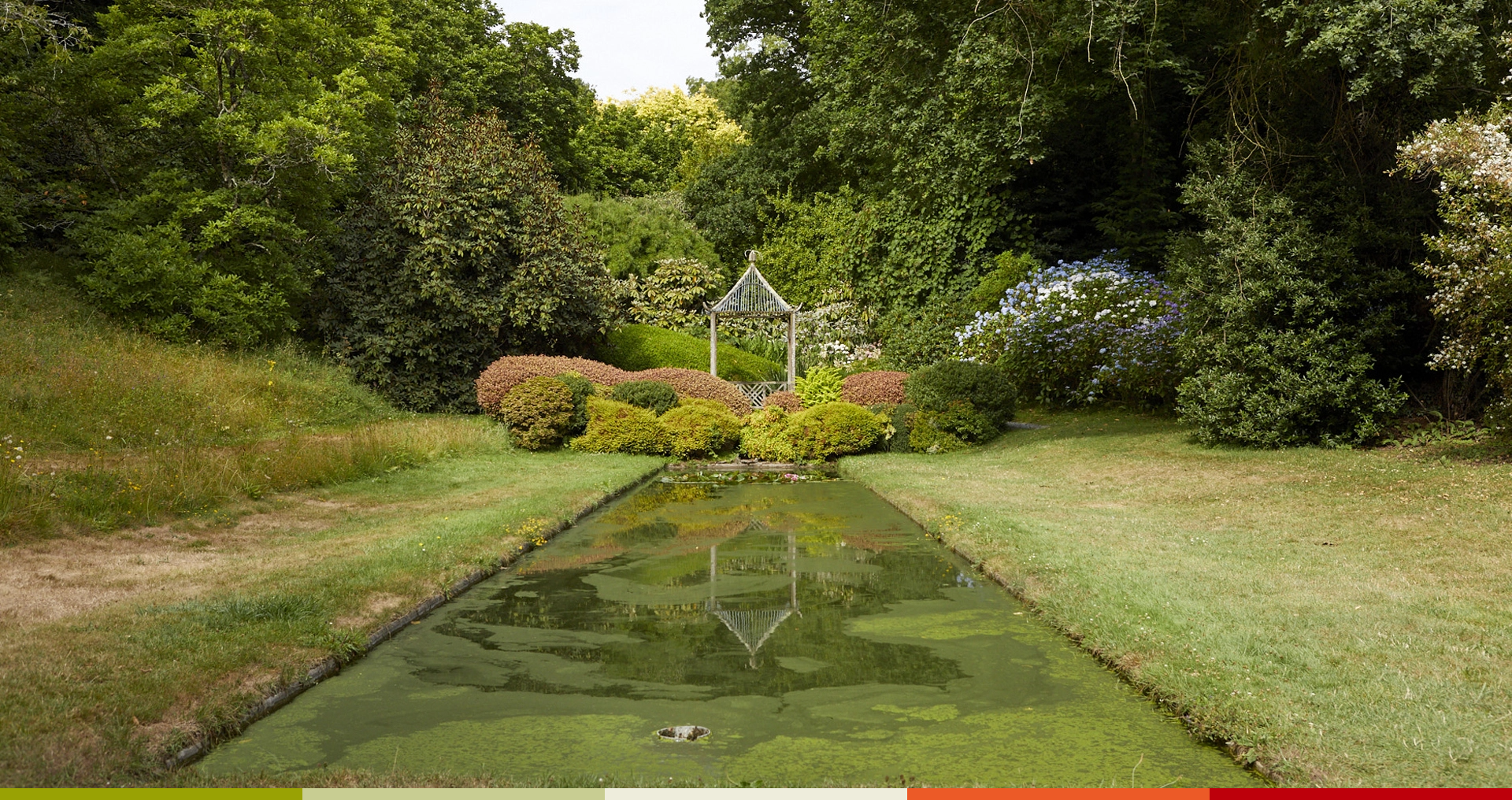
The Gardens
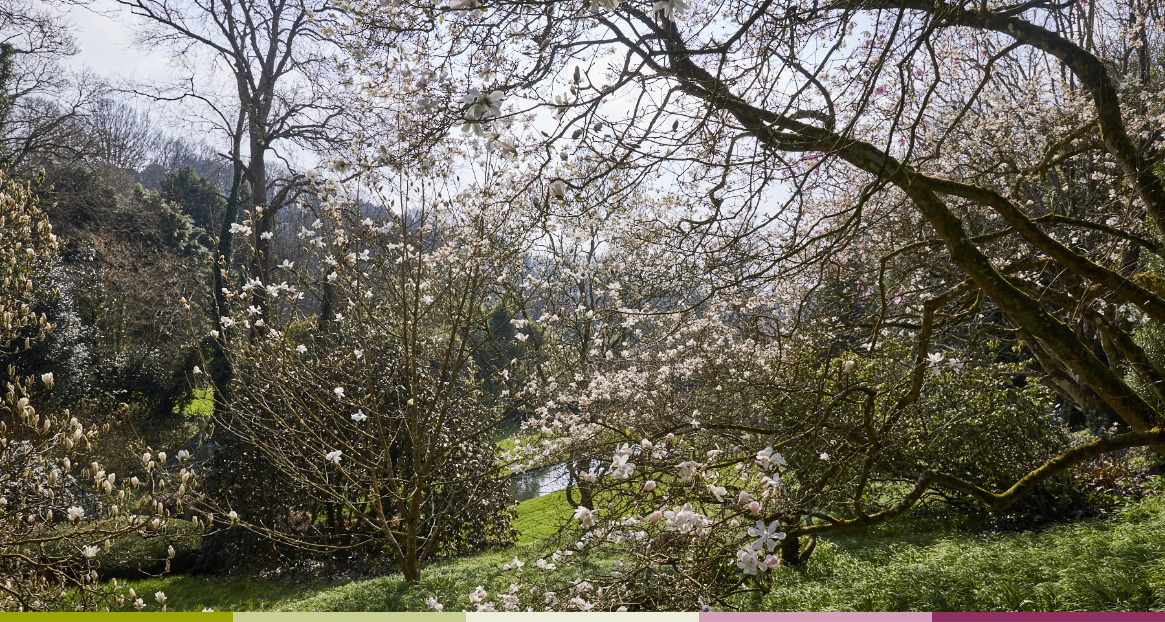
The Upper Valley
At the highest point of the estate, surrounded by a wind-break formed by palm laurels, Kerdalo’s watercourse begins.
A vital element, essential for the garden to flourish, it is captured and directed from the Vallée du Haut before crossing the Italian grotto and flowing into the Jaudy.
The top of this humid valley, where the orchard used to be found, was the ideal place for a composition of Rhododendron augustinii and deciduous Magnolia. Chosen in complementary tones of blue and orange, a large number come from the Garden House, created by Lionel Fortescue in Devon, England.
Sheltered by the holly barrier, hydrangeas, acanthus and arums bend over two small ponds fed by the stream coming from a spring outside the estate. Some beautiful specimens are to be noticed such as the Stewartia japonica, Drimys lanceolata, Magnolia x soulangeana ‘Brozzoni’ and Rhododendron ‘Sir Charles Lemon’.
Not to be missed
| Rhododendron augustinii |
| Stewartia japonica |
| Rhododendron ‘Sir Charles Lemon’ |
| Drimys lanceolata |
| Magnolia x soulangeana ‘Brozzoni’ |
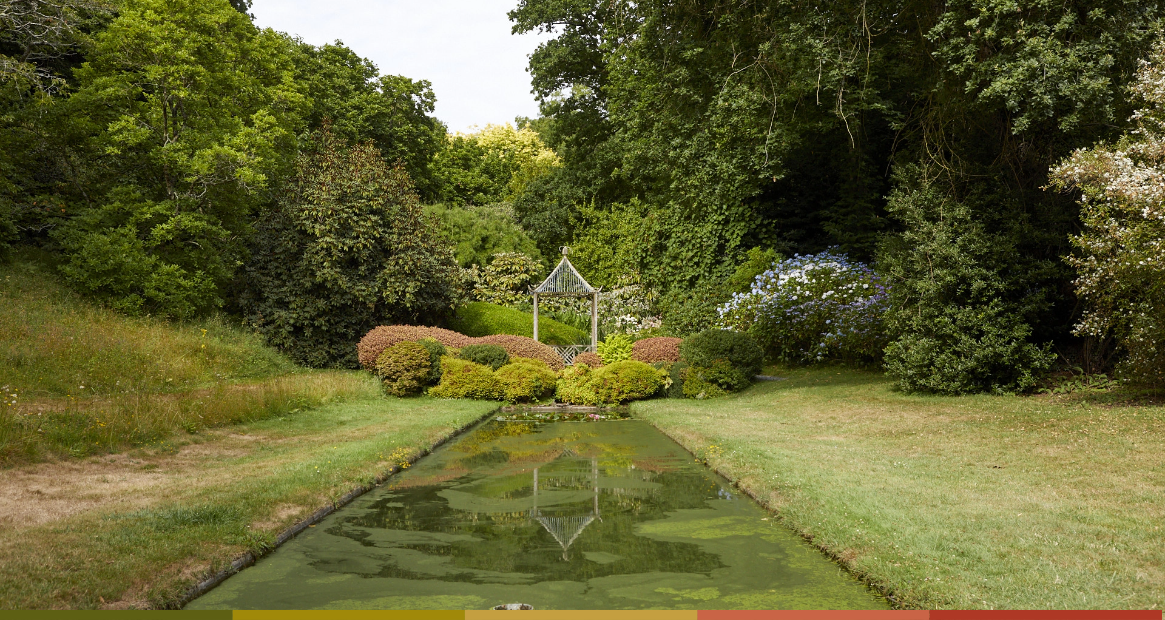
The Canal
At the centre of this “chamber” with its Asian influences, a rectangular basin was designed in which different reflections play hide-and-seek. At one of the far ends, a wooden pagoda conceived of by P. Wolkonsky catches the eye. It was inspired by the watercolors of the English painter Robin for the gardens at Woodside, Old Windsor, dating from the late eighteenth century. In the autumn a screen of flaming red unfolds: the Vitis coignetiae ends the season in glorious beauty.
In the spring, the Exochorda x macrantha ‘The Bride’ are adorned with countless small white flowers while the Magnolia x soulangeana ‘Brozzonii’ and Magnolia sprengeri diva proudly display their pink and white finery.
Not to be missed
| Vitis coignetiae |
| Magnolia x soulangeana ‘Brozzoni’ |
| Exochorda x macrantha ‘The Bride’ |
| Magnolia sprengeri diva |
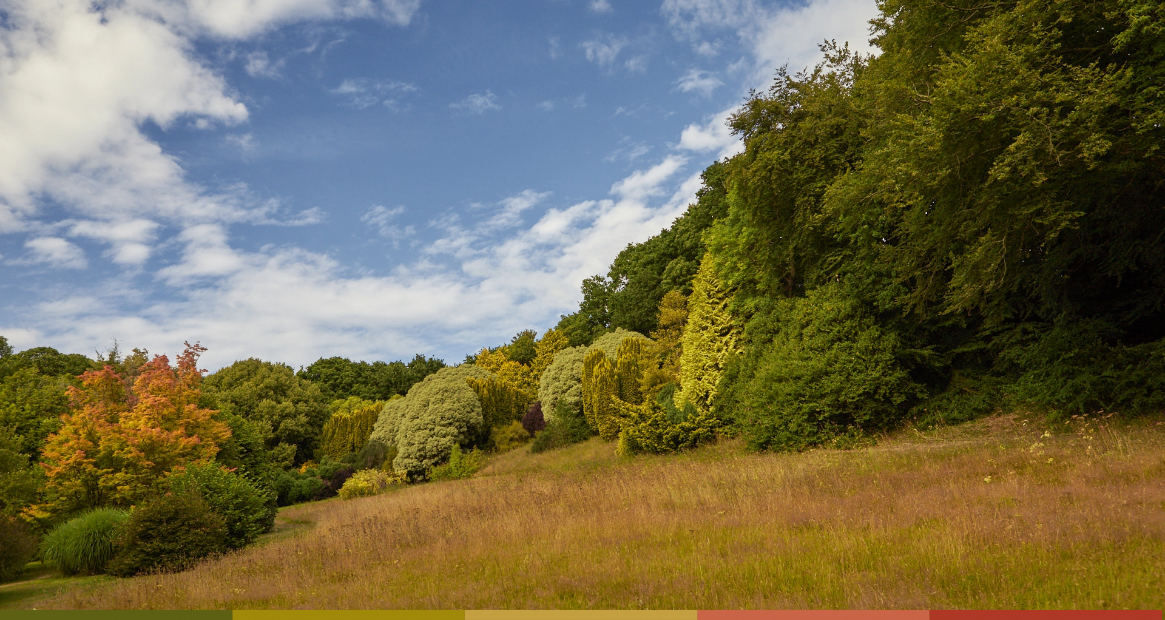
The Golden Heath
Originally, this part of the garden, once colonized by gorse and broom, had caught the eye of the painter P. Wolkonsky with its golden color.
The gorse and broom have since been replaced by Taxus baccata ‘Fastigiata Aureomarginata,’ Pittosporum tenuifolium ‘Variegatum’ and ‘Golden King,’ Cornus alba ‘Gouchaultii,’ and even Genista aetnensis. Some touches of red have been added through Cornus alba ‘Sibirica’ and Cotinus coggygria ‘Atropurpurea.’
Today, all these remarkable specimens, aged over forty years, give the Lande Dorée the appearance of a P. Wolkonsky painting and make it one of the signature elements of the Jardins de Kerdalo.
Not to be missed
| Taxus baccata ‘Fastigiata Aureomarginata’ |
| Pittosporum tenuifolium ‘Variegatum’ |
| Pittosporum tenuifolium ‘Golden King’ |
| Cornus alba ‘Gouchaultii’ |
| Genista aetnensis |
| Cornus alba ‘Sibirica’ |
| Cotinus coggyria ‘Atropurpurea’ |
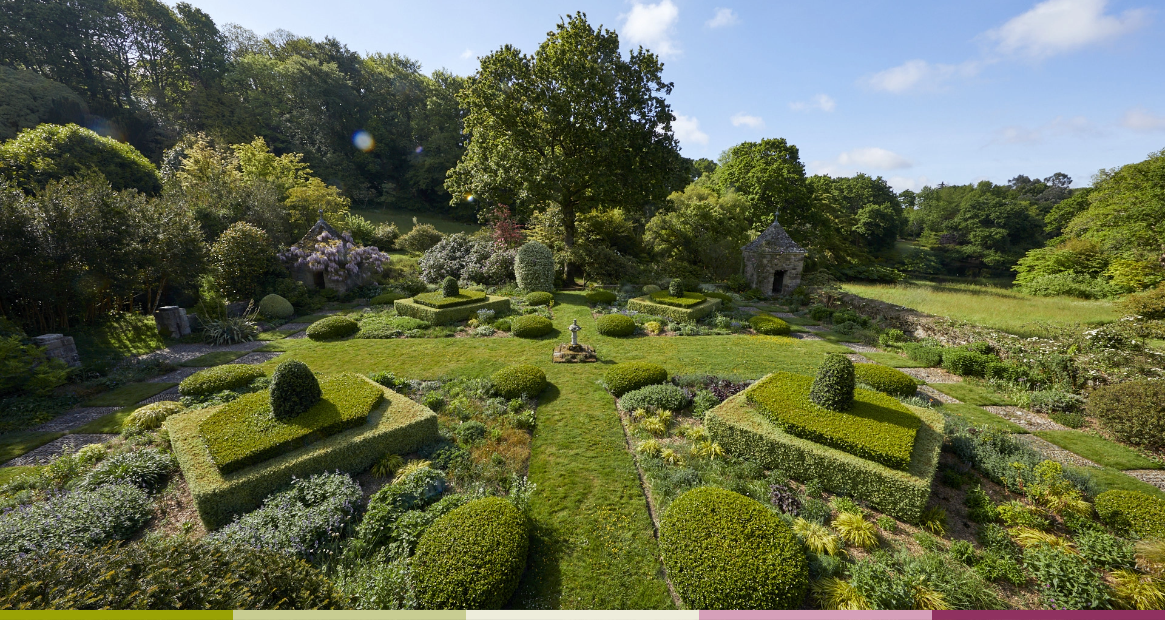
The Four Plots
Visible from the garden’s belvedere which faces the mansion, the farm’s former kitchen garden, which must have originally been home to Peter Wolkonsky’s iris collection, was reconceived and completely redone by Timothy Vaughan between 2002 and 2004. The floods of autumn 2000 and weeds had gotten the better of the place.
In summer, it’s a palette of pink (Penstemon ‘Evelyn’, Persicaria affine, Allium sphaerocephalon, Nepeta ‘Six Hills Giant’) and blue (Geranium ‘Rozanne’), warmed by some touches of bright yellow (Hakonechloa macra ‘Aureola’) that one can admire from the railing. This height allows ones to appreciate not only the geometric forms and symmetry but all to look far in the distance over the Lande Dorée.
Not to be missed
| Penstemon ‘Evelyn’ |
| Persicaria affine |
| Allium sphaerocephalon |
| Nepeta ‘Six Hills Giant’ |
| Geranium ‘Rozanne’ |
| Hakonechloa macra ‘Aureola’ |
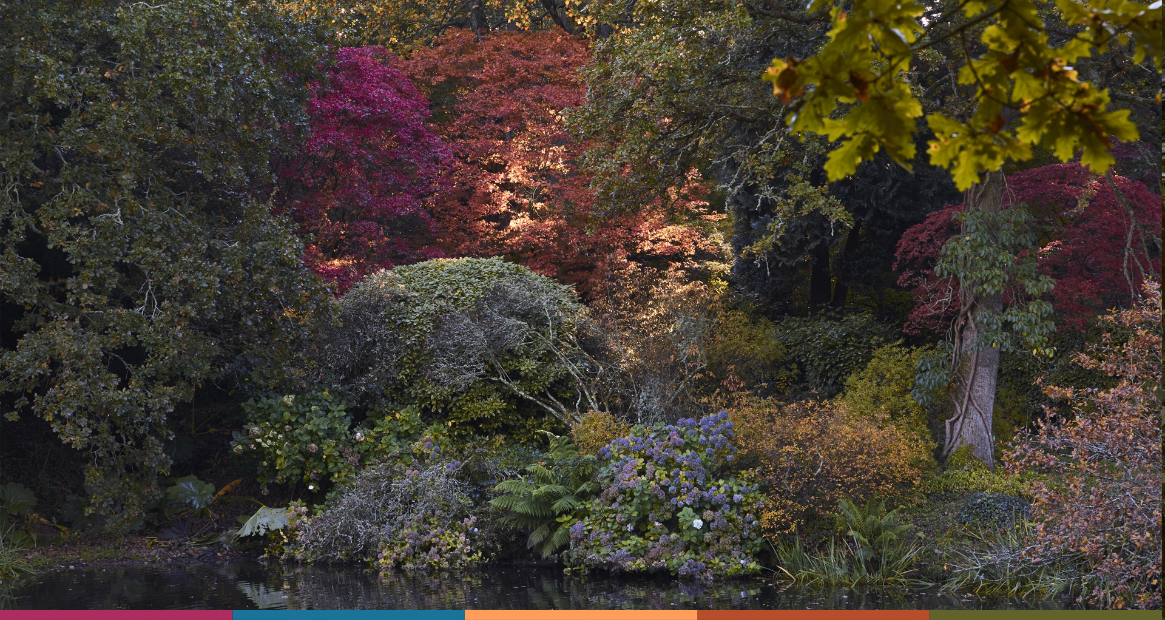
The Lower Valley
The path that leads to the lower valley goes along the edge of the large pond to the dike. A bit after the Drymis lanceolata, the path splits. For a glorious show in spring and summer, take the left fork which becomes a bit narrower.
The bright yellow Lysichitum americanum and white Lysichitum camtschatcensis are the first blooms at the beginning of spring. Then the Gunnera manicata make their appearance. Although they are still adorned with their winter coverings, you will be able to detect the unfolding of their new leaves. At the edge of the little stream, a few Dicksonia antartica give a touch of verticality. In this part of the garden, the blooming of azaleas and rhododendrons is spectacular at the beginning of May.
In summer, it becomes a real jungle. The flowers and gigantic leaves of the Gunnera manicata entwine with the Matteucia struthiopteris, astilbes and lysichiton leaves, which are now at their peak.
In autumn, everything becomes calmer, and just before the first frost, the Gunnera are protected by placing over the heart of the plant folded-over cut leaves.
« Even if I find certain aquatic plants magnificent, I like water to be flat and open like a mirror, it’s as if we were doubling the garden’s surface. »
Peter Wolkonsky
Not to be missed
| Drymis lanceolata |
| Lysichitum americanum |
| Lysichitum camtschatcensis |
| Gunnera mannicata |
| Dicksonia antartica |
| Matteucia struthiopteris |
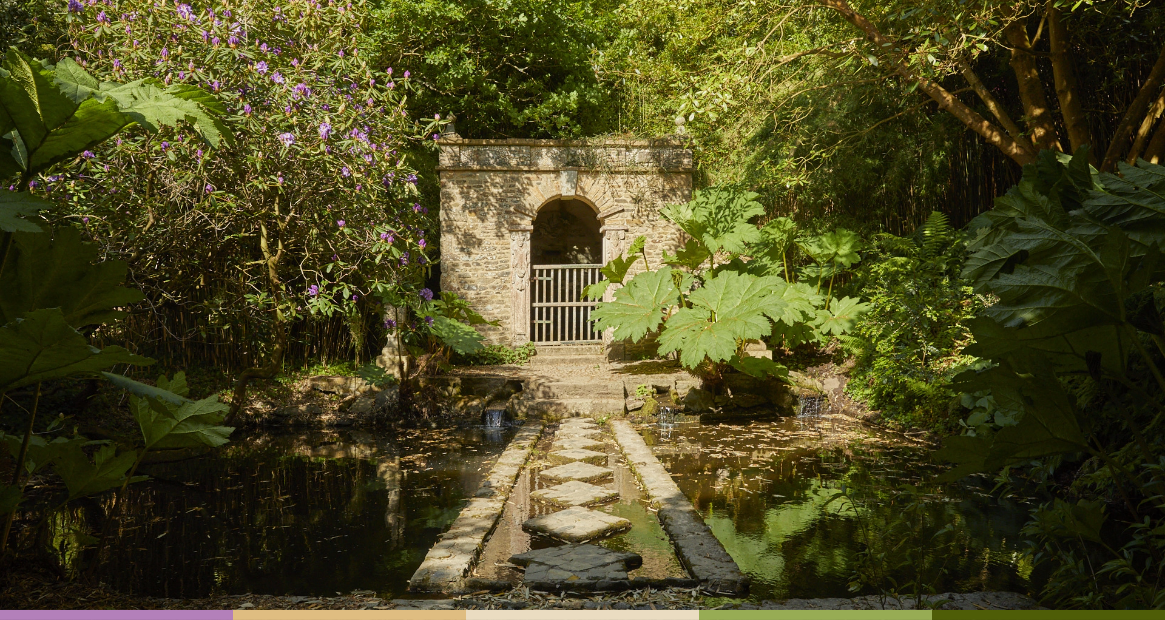
The Italian Grotto
During his youth, Peter Wolkonsky had discovered Italian gardens, characterised, among other things, by the calming presence of water and grottos, representing the terrestrial origins of man. It’s in this spirit that the little edifice was built. The marine characters that decorate the walls and were made from shells give the place a mysterious atmosphere. All summer long, the gigantic leaves of the Gunnera manicata amplify this sensation.
Take the time to admire the unusual trunks of the Luma apiculata (Myrtus luma) right next to the grotto.
« I’ve always really liked shells. At Kerdalo we’re next to the sea, but I think this also comes to me from Italy and its grottos. When I visited a place, I always made sketches of all kinds of things. »
Peter Wolkonsky
Not to be missed
| Gunnera Manicata |
| Luma apuculata |
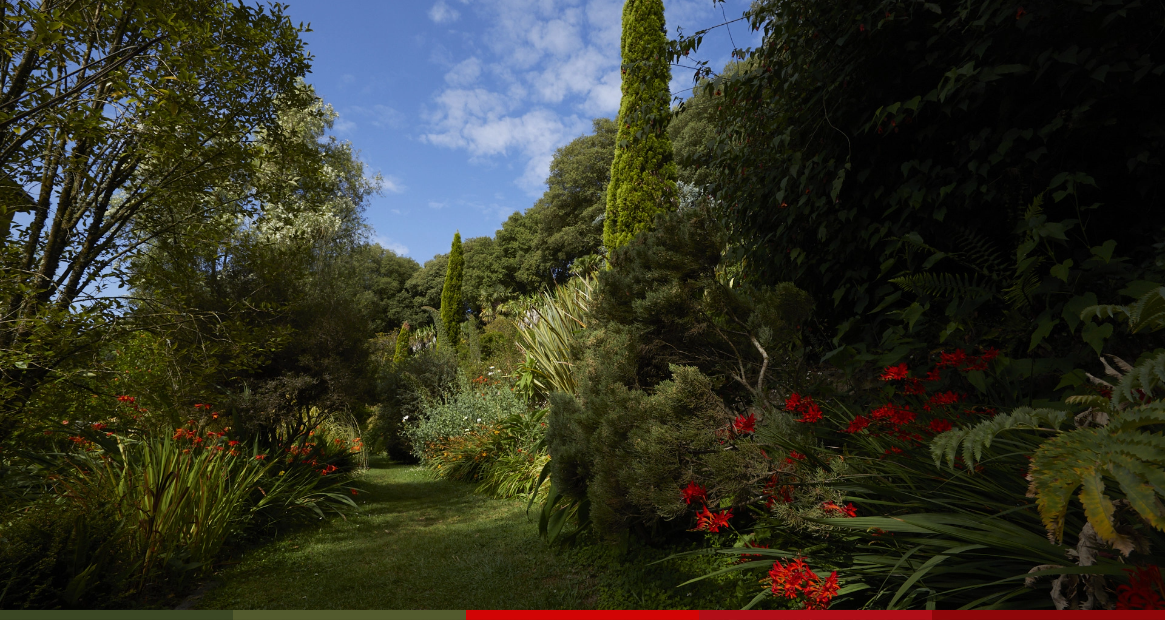
The Terraces
Given its southern exposure, P. Wolkonsky decided to plant less hardy plants in this “Petit Nice”.
On the terraces, spring awakens with a predominance of yellow-green, but it’s during the blooming of various acacia species (commonly known as mimosas) that it is most impressive.
It’s an explosion of colours in the summer: the fiery red and bright yellow of the Crocosmia ‘Lucifer’ and ‘Paul’s Best Yellow’ entwine with the grey-silver leaves of the Melianthus major while the delicate little white flowers of the Hoheria sextylosa pair perfectly with the yellow of the Kniphofia ’Green Jade’. The impressive blooming of the Beschorneria yuccoides must not be missed. The Echium pininana and Cupressus sempervirens bring a touch of verticality.
In the autumn, the red foliage of the Cotinus coggygrya ‘Grace’ and the flowers of the Fascicularia pitcairniifolia bring one of the last touches of colour to the terraces.
Not to be missed
| Crocosmia ‘Lucifer’ |
| Crocosmia ‘Paul’s Best Yellow’ |
| Melianthus major |
| Hoheria sextylosa |
| Kniphofia ‘Green Jade’ |
| Beschorneria yuccoides |
| Echium pininana |
| Cupressus sempervirens |
| Cotinus coggygrya ‘Grace’ |
| Fascicularia pitcairniifolia |